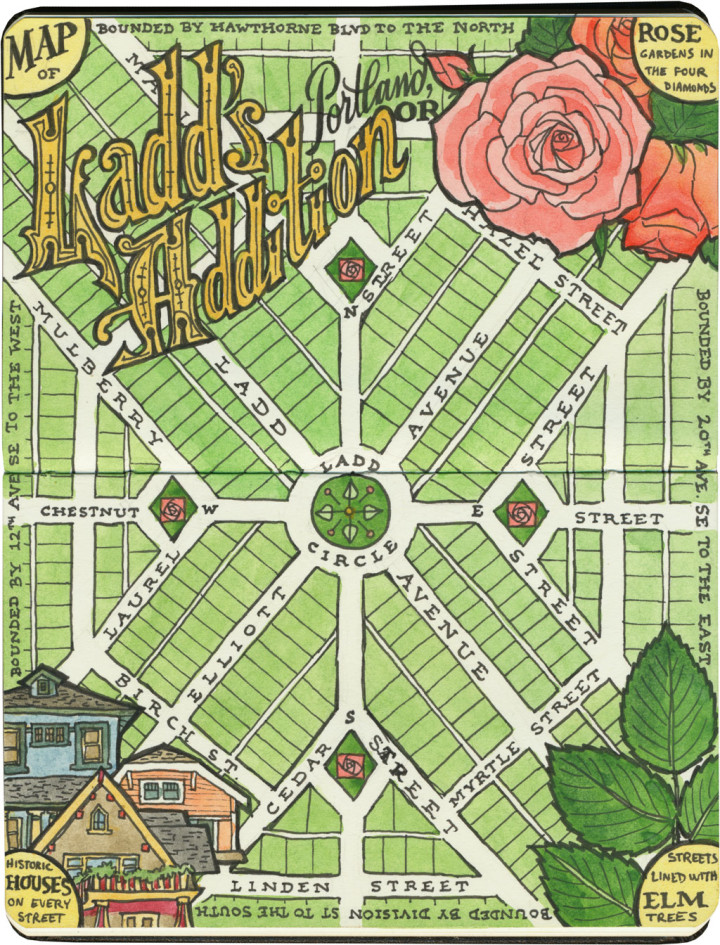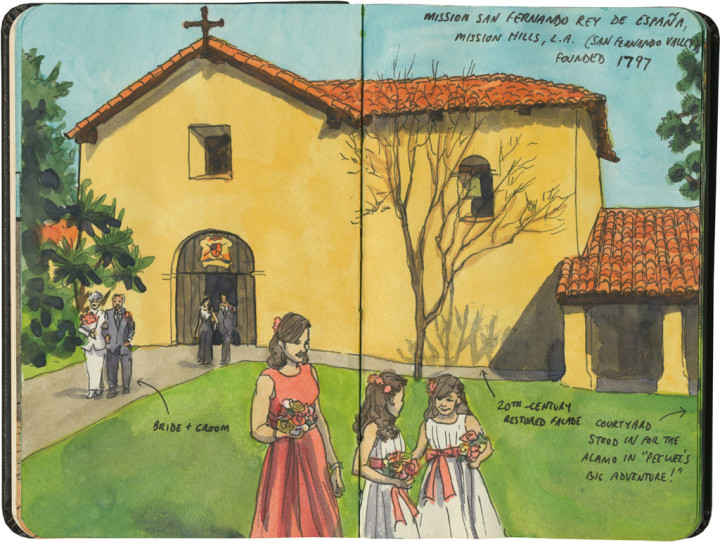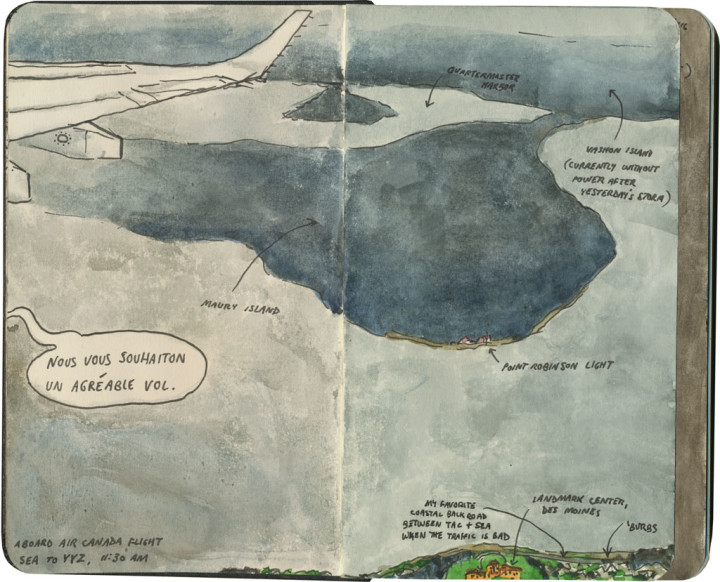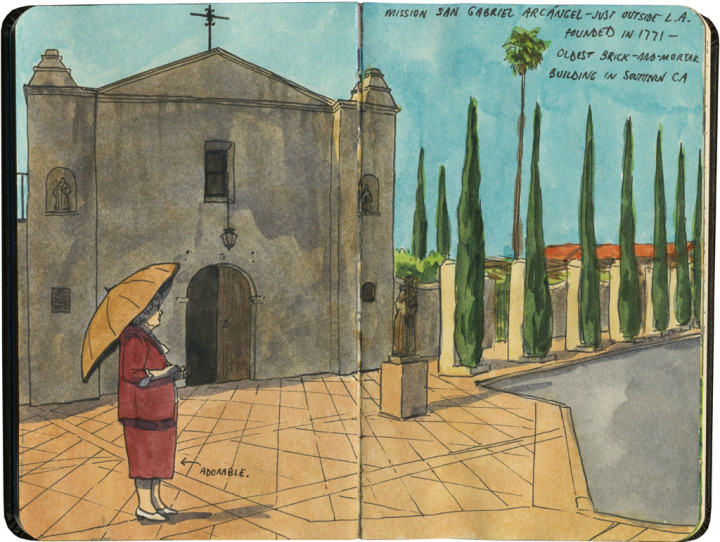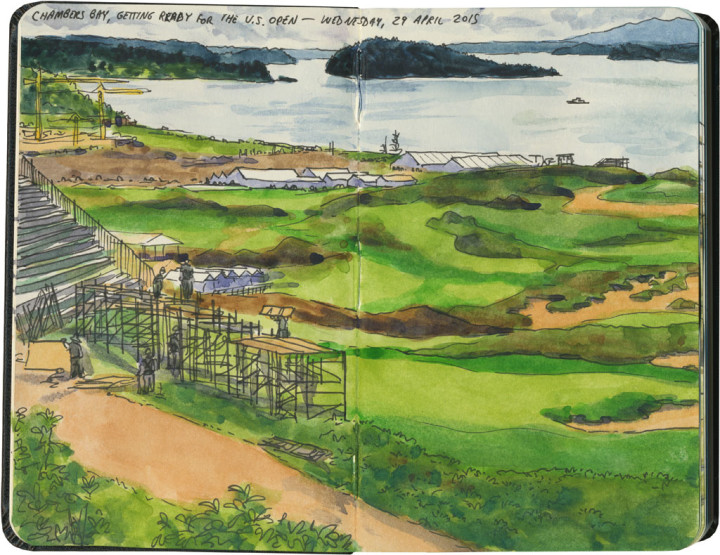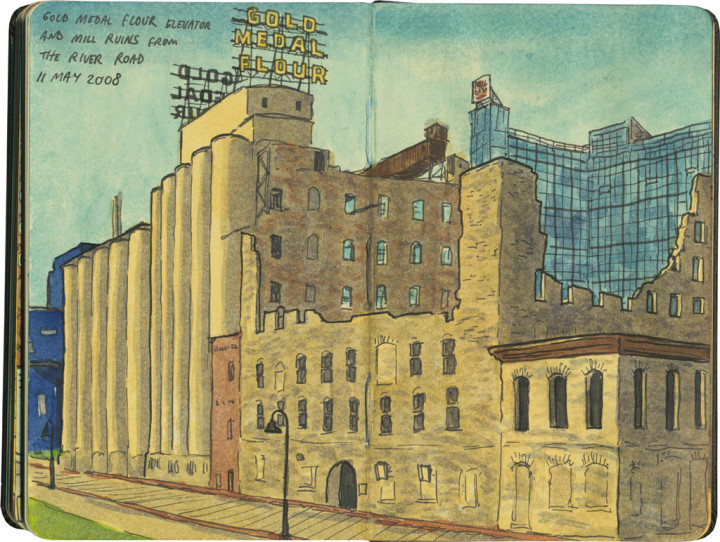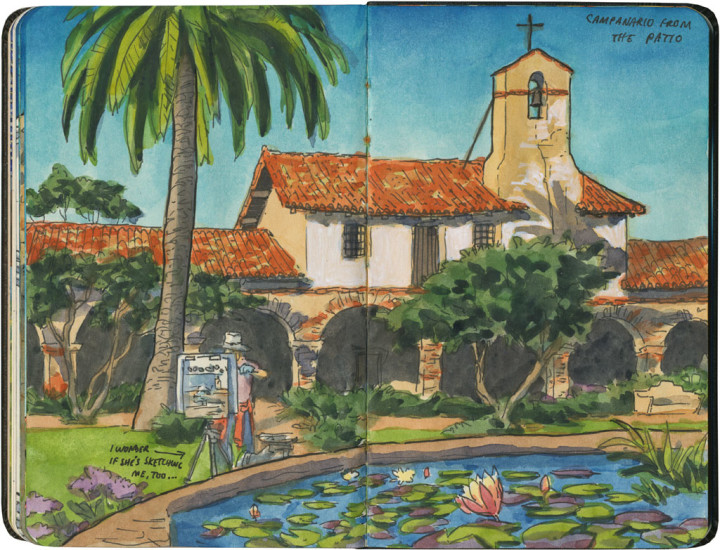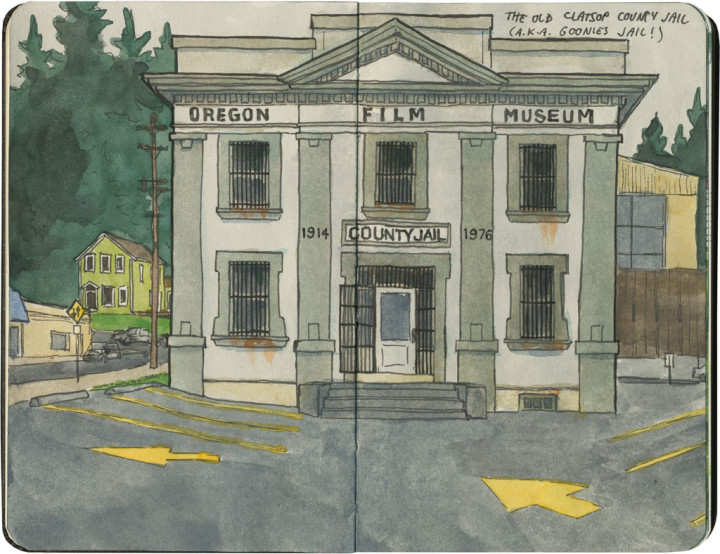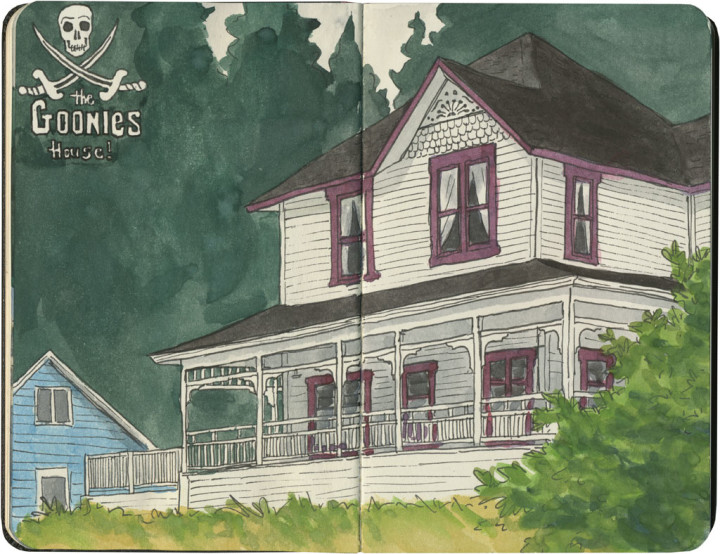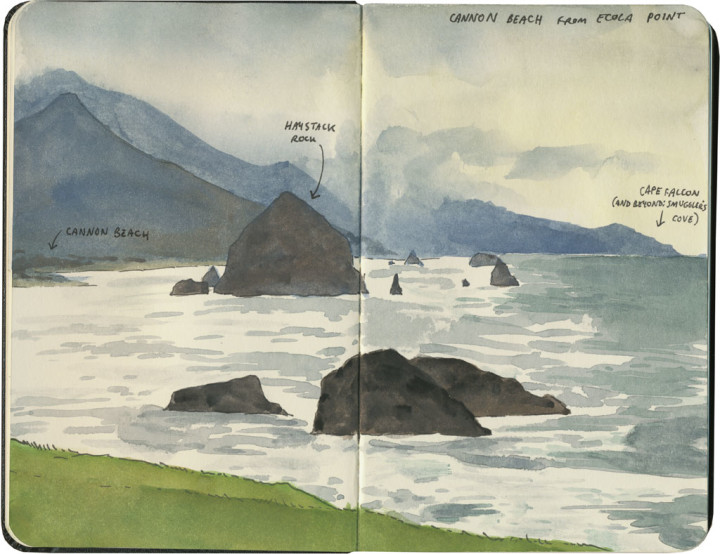June is the month of roses in the Pacific Northwest, and there’s no better place to see roses than the City of Roses. And there’s no better rose garden in the City of Roses than the diamond gardens in Ladd’s Addition. So in honor of my favorite Portland neighborhood, here are two midsummer sketches, done exactly three years apart.
Ladd’s Addition was the first planned residential development in the state of Oregon. Conceived in 1891 and mostly built between 1905 and 1930, the area is now a national historic district. In deliberate contravention of the city grid, the neighborhood is laid out in an “X” pattern with a circle park and rotary in the center. Where each diagonal street intersects one other at points north, south, east and west of the circle, there’s a small diamond-shaped garden that’s home to one of Portland’s many rose test gardens. And along every tree-lined and tree-named (though some have been rechristened in modern times; the map above shows their original names) street are many dozens of historic homes—many of which are unique or unusual examples of Craftsman-, Tudor- and Mission-style architecture.
Every part of this neighborhood is appealing to me—I’m a sucker for a good map, a Craftsman house and a pale peach rose. Put them all together, with a shady spot for me to sit and sketch, and I’m instantly in heaven.
